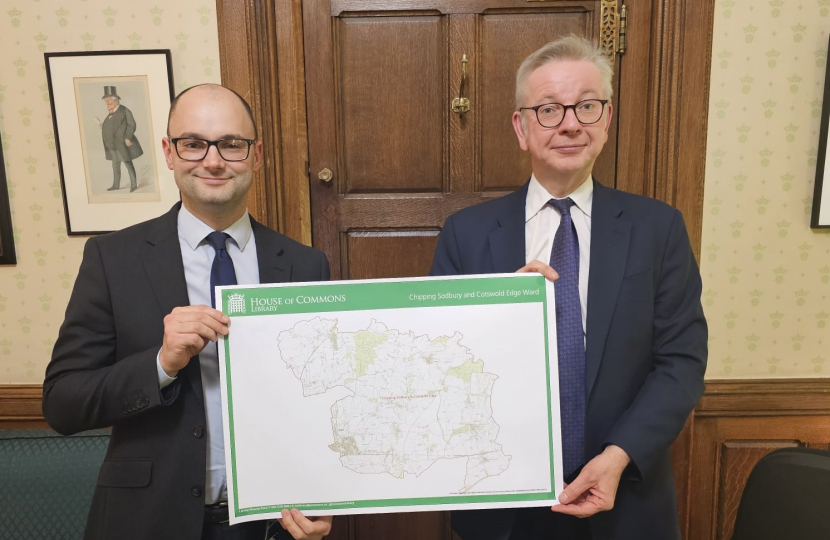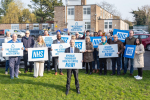
Luke Hall met with the Housing Secretary Michael Gove this week, to ask for a commitment that the Government would ensure that Bristol takes its fair share of new housing.
The Government have made it national policy that all urban centres, including Bristol, should accommodate a 35% uplift on housing targets to help ensure that urban centres are utilising available brownfield land to ensure a fair distribution of housing. However, Bristol Councillors have opposed the 35% uplift.
Luke Hall made it clear to Michael Gove that the Government must use all the tools at its disposal to ensure Bristol builds the homes required on the brownfield sites available within the city, explaining that neighbouring areas like South Gloucestershire cannot take on unsustainable levels of housing to make up for Bristol’s shortfall though a legal ‘duty to cooperate’.
South Gloucestershire has already set a target of building 28,000 new houses and has seen significant development in Yate, Thornbury and in the surrounding villages. The local MP raised concerns that significant pressure is already being placed on local schools, health services, roads and community facilities, and that taking a share of Bristol’s housing would increase the pressure further.
Protecting local green spaces is a key part of Luke’s Positive Plan for the Environment, and he has campaigned extensively against poorly thought-out plans to build thousands of houses at Buckover, Charfield, and on the green belt in Coalpit Heath.
Luke is also specifically opposing a developer’s plans to build 725 homes off St Johns Way in Chipping Sodbury, proposed in a partial flood zone as an example of unacceptable and poorly planned development.
Commenting after the meeting Luke said; “We cannot allow developers to concrete over green fields and flood zones simply because Bristol are not prepared to take their share of new housing. There is already significant pressure on our roads, our GP services and our schools and we cannot allow further uncontrolled incursion into our precious green spaces.”

